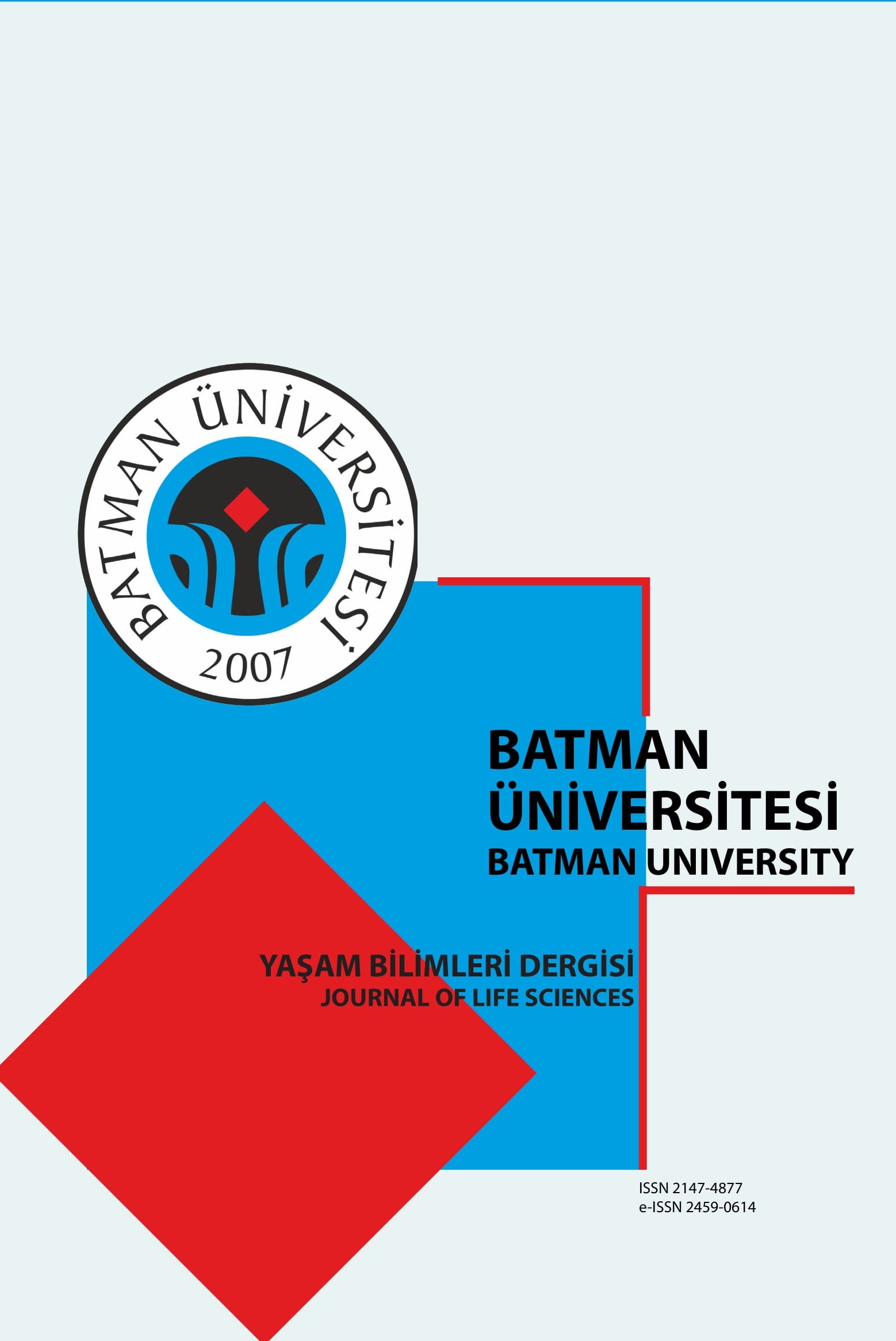İşlev Kelimeleri Olarak İngilizce Edatlar Dil Öğrenenler İçin Normalde Zannedildiği Kadar Kolay Değildir
İngilizce Edatlar, İngilizce Dil Bilgisi, İşlevsel Sözcükler, Yabancı Dil, Sözdizimi.
English Prepositions As Functıon Words Are Not As Easy For Language Learners As Normally Supposed To Be
English Prepositions, English Grammar, Funtion Words, Foreign Language, Syntax.,
___
- Akkök, E. A. (2009). İngilizce Öbeksi Eylemlerin Öğretiminde Dilbilimsel Bir Yaklaşım. Dil Dergisi 146 (2009). Ankara Üniversitesi. https://doi.org/10.1501/Dilder_0000000118
- Butterfield, J. edt. (2003). Collins English Dictionary. Complete and Unbridged. A HarperCollins Publisher, Great Britain.
- Buz, Y. (2008). English Grammar. D publishing. İstanbul.
- Celce-Murcia, M. and Larsen-Freeman, D. (1983). The grammar book: an ESL/EFL teachers course. Newbury House Publishers Inc. Rowley, Massachusetts.
- Crystal D. (2008). A dictionary of linguistics and phonetics. (6. Edition) Blackwell Publishing, USA.
- Demiral S., and Kaya M. (2016). Fransizcada ve Türkçede İlgeçlerin Karşılaştırmalı Analizi. Turkish Studies, 11 (10), 203-216. International Periodical for the Languages, Literature and History of Turkish or Turkic Spring.
- Erdem E. (2019). Use of English Prepositions in l2 Oral Production, International Journal of Educational Spectrum, 1(2), 88-93.
- Greenbaum, S. and Quirk R. (1990). A Student’s Grammar of the English Language. Longman. Harlow, Essex, England.
- Gvarishvil, Z. (2012). Interference of L1 Prepositional Knowledge in Acquiring of Prepositional Usage in English. Procedia-Social and Behavioral Sciences, 70, 1565-1573. doi: 10.1016/j.sbspro.2013.01.224
- Heydari, P. and Bagheri, M. S. (2012). Error Analysis: Sources of L2 Learners’ Errors. Theory and Practice in Language Studies, 2 (8), 1583-1589.
- Huddleston, R. D. and Pullman G. (2008). The Cambridge grammar of the English language. (2.Edition). Cambridge University Press.
- Lowie W. and Verspoor M. (2004). Input Versus Transfer? The Role of Frequency and Similarity in the Acquisition L2 Prepositions: In Michel Achard and Susanne Niemeier (Eds). Cognitive Linguistics, Second Language Acquisition, and Foreign Language Teaching (77-93). Mouton de Gruyter, The Hague and Berlin.
- McCarthy M. and O’Dell F. (1999). English Vocabulary in Use, Upper Intermediate & Advanced. (9. Edition). Cambridge University Press Published by The Press Syndicate of The University of Cambridge, UK.
- Nghi T.T., Thang N.T. and Phuc T.H. (2021). An Investigation into Factors Affecting the Use of English Prepositions by Vietnamese Learners of English. International Journal of Higher Education, 10 (1), 24-40 doi:10.5430/ijhe.v10n1p24
- Özbay, A. Ş. and Bozkurt, S. (2017). Tertiary Level EFL Learners’ Use of Complex Prepositions: in KTUCLE, TICLE versus LOCNESS. The International Journal of Educational Researchers, 8 (3), 32-41. https://dergipark.org.tr/en/download/article-file/638875
- Radford A. (2005). Minimalist Syntax. Cambridge Textbooks in Linguistics. Cambridge University Press.
- Saravanan, J. (2015). The Use of English Prepositions: An Empirical Study. Journal of NELTA, 19 (1- 2), 158-168. https://doi.org/10.3126/nelta.v19i1-2.12089
- Seher, A. (1992). Proficiency in English. Tepe Yayınları, Ankara.
- Slim M. (2004). Explore good English grammar. A.D.R. Limited, London, Great Britain.
- Teschner R.V. and Evans E.E. (2007). Analyzing the grammar of English (3. Edition). George Town University Press, Washington DC.
- Tomakin E. (2017). A Suggestion of Teaching English Prepositions in the Turkish Sentences Covertly. Turkish Method, YYU Journal of Education Faculty, 14 (1), 1601-1623.
- Yaş, E. (2020). Bir Çırpıda ve Detayda Türkçe Açıklamalı İngilizce Gramer. Paradigma Akademi Yayınları, İstanbul.
- ISSN: 2147-4877
- Yayın Aralığı: Yılda 2 Sayı
- Başlangıç: 2012
- Yayıncı: Batman Üniversitesi
Batman Çevresi Antep Fıstığı Potansiyeli ve Kabuklarının Biyokütle Kaynağı Olarak Değerlendirilmesi
İdris DEMİR, Şehmus ALTUN, Fevzi YAŞAR
Göçmenlerin Sağlık Hizmetlerine Erişiminde Karşılaştıkları Sorunlar
Millî Edebiyat Bağlamında Müfide Ferit Tek’in Aydemir Adlı Romanı
Rusya-Ukrayna Savaşı’nın Türkiye Turizmine Olası Etkileri
Tülay GÜNEY, Sevinç GÖKTEPE, Hasan Tahsin KOKONALIOĞLU
GÖÇMEN KİMLİĞİ BAĞLAMINDA METAVERSE DÜNYASINA GERÇEKLEŞEN SANAL SEFER İLE FİİLİ GÖÇÜN MUKAYESESİ
